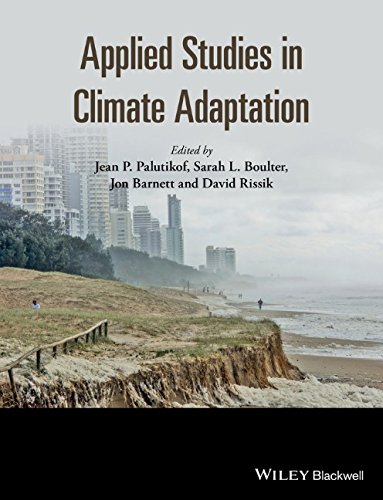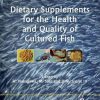Applied Studies in Climate Adaptation 1st Edition by Jean P Palutikof,Sarah L Boulter,Jon Barnett,David Rissik ISBN 1118845013 978-1118845011
$50.00 Original price was: $50.00.$35.00Current price is: $35.00.
Applied Studies in Climate Adaptation 1st Edition by Jean P. Palutikof, Sarah L. Boulter, Jon Barnett, David Rissik – Ebook PDF Instant Download/Delivery: 1118845013, 978-1118845011
Full download Applied Studies in Climate Adaptation 1st Edition after payment

Product details:
ISBN 10: 1118845013
ISBN 13: 978-1118845011
Author: Jean P. Palutikof, Sarah L. Boulter, Jon Barnett, David Rissik
The book advances knowledge about climate change adaptation practices through a series of case studies. It presents important evidence about adaptation practices in agriculture, businesses, the coastal zone, community services, disaster management, ecosystems, indigneous populations, and settlements and infrastructure. In addition to 38 case studies across these sectors, the book contains horizon-scoping essays from international experts in adaptation research, including Hallie Eakin, Susanne Moser, Jonathon Overpeck, Bill Solecki, and Gary Yohe.
Australia’s social-ecological systems have a long history of adapting to climate variability and change, and in recent decades has been a world-leader in implementing and researching adaptation, making this book of universal relevance to all those working to adapt our environment and societies to climate change.
Table of contents:
Part 1: Frameworks for enabling adaptation
Chapter 1: Introduction to the book
Chapter 2: Adaptation as a field of research and practice: notes from the frontiers of adaptation
Chapter 3: Thoughts on the context of adaptation to climate change
Chapter 4: Reflections on disaster loss trends, global climate change and insurance
Chapter 5: Designing spatial adaptation planning instruments
Chapter 6: Public risk perceptions, understandings and responses to climate change
Chapter 7: Bridging the gap between researchers and decision-makers
Part 2: Managing ecosystems under climate change
Chapter 8: The challenge of biodiversity adaptation under climate change
Chapter 9: Management options for bird conservation in the face of climate change
Chapter 10: Methods to prioritise adaptation options for iconic seabirds and marine mammals impacted by climate change
Chapter 11: Climate adaptation and adaptive management planning for the Macquarie Marshes: a wetland of international importance
Chapter 12: Conservation of Australian plant-dwelling invertebrates in a changing climate
Part 3: Farming
Chapter 13: Agricultural adaptations: social context and complexity
Chapter 14: Farmer decision-making under climate change: a real options analysis
Chapter 15: Broadacre farmers adapting to a changing climate
Chapter 16: Growth opportunities for marine fisheries and aquaculture industries in a changing climate
Chapter 17: Water tariffs and farmer adaptation: the case of Goulburn–Murray Water, Victoria, Australia
Chapter 18: The role of water markets in helping irrigators adapt to water scarcity in the Murray–Darling Basin, Australia
Part 4: Coasts
Chapter 19: Raising the seas, rising to greatness? Meeting the challenge of coastal climate change
Chapter 20: A framework for modelling the risks of climate-change impacts on Australian coasts
Chapter 21: Navigating from climate change impacts to adaptation actions in coastal ecosystems
Chapter 22: Enhancing the resilience of seaports to a changing climate
Chapter 23: Equity, economic efficiency and institutional capacity in adapting coastal settlements
Chapter 24: Who should do what? Public perceptions on responsibility for sea-level rise adaptation
Part 5: Building resilience among vulnerable groups
Chapter 25: The ‘turn to capacity’ in vulnerability research
Chapter 26: The limits to adaptation: a comparative analysis
Chapter 27: Adaptation to extreme heat and climate change in culturally and linguistically diverse communities
Chapter 28: Experiences of resettled refugees during the 2011 Queensland floods
Chapter 29: Vulnerability to climate change among disadvantaged groups: the role of social exclusion
Chapter 30: Adapting the community sector for climate extremes
Part 6: Indigenous experience of climate change
Chapter 31: Continuity and change: Indigenous Australia and the imperative of adaptation
Chapter 32: Housing, households and climate change adaptation in the town camps of Alice Springs
Chapter 33: Indigenous experiences and responses to Cyclone Tracy
Chapter 34: Indigenous governance and climate change adaptation: two native title case studies from Australia
Chapter 35: Indigenous adaptation to climate change: the Arabana
Part 7: Settlements and housing
Chapter 36: Contextualising the challenge of adapting human settlements
Chapter 37: Climate change and the future of Australia’s country towns
Chapter 38: Robust optimisation of urban drought security for an uncertain climate
Chapter 39: How to cope with heat waves in the home
Chapter 40: Pathways for adaptation of low-income housing to extreme heat
Chapter 41: Climate change adaptation in the rental sector
Part 8: Adaptation and disaster management
Chapter 42: Practical adaptation: past, present and future
Chapter 43: Community resilience to disaster in four regional Australian towns
Chapter 44: Sink or swim? Response, recovery and adaptation in communities impacted by the 2010/11 Australian floods
Chapter 45: Disaster risk management and climate change adaptation revisited
Part 9: Business
Chapter 46: Adaptation to climate change by business organisations
Chapter 47: Capacities of private developers in urban climate change adaptation
Chapter 48: Ensuring small business continuity under a changing climate: the role of adaptive capacity
Chapter 49: Investing in adaptive capacity: opportunities, risks and firm behaviour
People also search for:
applied studies in climate adaptation
climate adaptation vs climate mitigation
applied classification of climate
adaptation is defined with respect to local environmental conditions
study of weather and climate
Tags: Jean P Palutikof, Sarah L Boulter, Jon Barnett, David Rissik, Applied Studies in, Climate Adaptation



